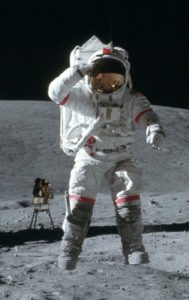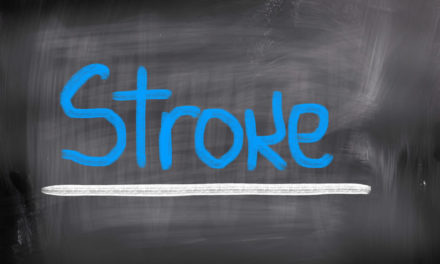
- T: “What happened?”
- P: “I feel a pull”
- T: “What do you mean by a pull?”
- P: “Something that is pulling”
- T: “And that pulling, feels like what”
- P: “It is like an elastic band that when I try to make a movement, it pulls me”
Let us stop right here for a moment, and try to reason over the lines between patient and therapist, during a simple movement of the body.
Let it be you, the patient directly interested in the results of the stroke, or a relative just looking for information, or a colleague who everyday faces in his patient’s’ recovery, the phrase: “I feel a pull” which I am sure is familiar to you.
At this internal moment of the therapy, where the physiotherapist asks his patient, what he feels in his body, is of fundamental importance. Yes, because the exercise, is not something that the patient takes as if it were a drug, it is an experience that has the value of making the patient more conscious of his body, his way of organizing his movement, and the effects of the pathology.
Because of this, the language represents one of the most important tools of the neuro cognitive rehabilitation according to Perfetti, since it offers the opportunity, either to the patient or to the therapist, to have a window over all that happens in that room, apparently armored, and called, conscience.
Why is it so important to raise the rehabilitation level where the patient experiments maneuvers, movements and manipulations without his conscious participation; to a level where the objective is to create an experience for the patient, where he will have the opportunity to know more details about his body, the pathology and the external environment?
Because the recovery is a learning process, like in a healthy state, we learn new things, like how to touch objects or gestures of a sport discipline, we learn new rules, procedures, sensations, and strategies; but when we find ourselves in a pathological condition, with an evident alteration of the movement, our recovery will go through a learning process where things will be changed a bit due to the cerebral injury, i.e. procedures, sensations, thus forcing us to learn new strategies.
I will give you a practical example of how the movement rules change after a stroke, and I will use a phrase that anybody who has experienced a recovery post stroke, has heard by the survivor, “…The command is given correctly, but it is the hand the one that does not obey”

In this phrase, we understand that the rules about movement and our body as we know them, changed after a cerebral injury, which not only altered the strength of the muscles, but also undermined our attention in respect to the body, and also our ability to anticipate and mentally provide the effects of the action, thus, it altered the perception of the external and internal world.
It is like, if all of a sudden, we find ourselves walking on the moon, and we want to walk on the moon surface, just like we do on the earth’s, where gravity plays a different role and where our actions have to be restructured. It is for this reason, why, the language is of fundamental importance, since it allows us to make the patient therapist experience; a conscious one and take it to a level of being able to understand in a deeper way, what happens to our body, (cognition) and which are the processes and the activities that we put in action, in order to understand them, (metacognition) in other words, the consciousness.
I am fully aware that, in a place where you deal with physiotherapy and recovery of a hemiplegic patient, we would have not expected to read an article with references that sound more like a philosophy text, rather than a practical exercises manual which would have been what we were expecting.
However, I want to remind you, that the main topic in all these pages, is the recovery of the movement after a brain injury, and that the brain is not a simple organ; the brain is the essence of our consciousness and of our movement while in the world, and when we deal with the consciousness, we have to take into consideration many more details, than the ones that we are usually used to consider, like numbers, cards, tables, and graphs.
Hence, when we talk about recovery, we should talk about the experience, and when we talk about the experience, we have to talk about the consciousness, and when we talk about consciousness, we have to talk about the language and use it, as a really therapeutic tool, fundamental to the patient and the therapist, in order to have access to the internal world.
The internal world of each one of us is unique, just like our DNA, unrepeatable in each individual, singular and intimate, and the language as a tool, allows us to study and respect the patient’s individuality.
Let´s go back to the first lines of the dialog between the therapist and the patient, where we started this article:
“It is like an elastic band that when I try to make a movement, it pulls me”
I am sure that each one of us, as we read this phrase, in our head, imagine the elastic band that the patient was talking about, and I can assure you that each one imagined a different elastic band, since we have a broader view of different experiences, so some imagined a yellow office elastic band, or the folder’s green ones, or the one in the gym’s shorts, or the one we use to tie up the luggage in the car.
Each one of us has his own experiences, thus a different concept of an elastic band.
The elastic band is a metaphor used by the patient, a bridge between the patient and the therapist, in order to create a connection between them, the patient with the elastic metaphor tried to say, “If you want to understand what I try on my body with this movement, you should imagine an elastic band that pulls”. In order to better understand the argument, I suggest you also read this article about the Metafora in Riabilitazione.
The therapist could have also stopped, when he listened “feel a pull” but he decided to continue to better understand the conscious experience of the patient and also to allow him to better explain what was happening in his internal world and due to this, by no means he will try for him to search deeper in what he has lived.
Not by random, I used the word “clean”, I used it, because one of the tools used in psychoanalysis in order to help the patients explore their own interior worlds, is the Clean Language, developed by David Grove in the mid 80s, which I will talk about in more depth, especially when applied to rehabilitation, in this article about the modellamento simbolico.
When the patient talks about his body, and the therapist through his meddling takes him to discuss it, he often does it through a metaphor, which is the mental process of highest level in our consciousness.
In fact, try to tell an Operational System, for example SIRI or any other calculator or artificial intelligence: “the street is like a snake”; while you try to get an idea of what you wanted to understand, associating the characteristics of the shape of the snake to the ones of the street, the calculator will not have the vaguest idea.
We will talk about the Metaphor in rehabilitation in a more profound manner in this article.
Here, I would like to point out that the metaphor is the way by which the human being learns and senses new things about the functioning of his own self and the world that surrounds him.
All our daily language, even though sometimes we are not aware of, is surrounded by metaphors; for example when we say: “I broke my head” , it is clear that we have not done it physically, but what we want is that our interlocutor places himself “in our shoes” (but here without doing it on purpose, we have another metaphor).
I understand how difficult the problem we are facing may have been and regardless of the results, what we want to create is a common world where the comprehension of our internal world can be more accessible.
Remember when not long ago, I gave you the “walking on the moon” example?
Yes, in that case I also used a metaphor, but I wanted to make you understand a new aspect through one already known. This is how the metaphor acts, allowing with an intuitive jump, to hook something unknown, using knowledge already known.
I will give you a famous example, in order to locate a metaphor not only through a rhetorical resource in our words, but with a true cognitive tool.
The physicist Niels Bohr in 1922 was awarded the Physics Nobel Prize, for having understood the structure and functioning of the atom. The Danish physicist did not have at hand enough technology to closely research how the atom will function, so he had to intuit, and in order to do it, he used the solar system metaphor, locating points in common between the rotation of planets near the sun and the rotation of electrons near the nucleus.
Similarly, when the patient finished his movement as if it were an elastic band, he is explaining himself as well as the therapist that he is facing something that he does not know, through a concept already known to him, the characteristics of the elastic band. It is obvious in this case, that the patient refers to the sensation caused by the hypertonia produced after the cerebral injury.
The spasticity is one of those components that is present, and represents one of those rules that changed in our body, and one that we have talked before and that patients were aware of and were ready to face, control, and overcome.
We had already talked about it, when we treat the spasticity argument, it is an automatic answer by our organism after a failure of trust and inefficiency of the information that we get through our body and environment, and that our central nervous system is obliged to delegate to some more elementary and automatic components of the movement, like the reflexes.
Due to this, in this first stage of the analysis guided by the language, that the patient in an attempt to explain the therapist what proofs during the movement, puts in place an analysis process of his own body locating and materializing all that he perceives, and that in itself makes him experiment, even though lightly, a reduction of the tension phenomenon since in part, it begins to satisfy the organism’s requirements of rebuilding the necessary body information for the movement management and the control of the hypertonia; is like if it were the ABC of the movement, in other words, its elemental component.
In fact, it is difficult to think of obtaining an advanced movement, if we are not able to find the effects of the pathology, that are expressed in our body, like elastic bands, or ropes, or edges. At this point of the reading, the relatives, who have to handle the problem of the patient with aphasia at home, are thinking that they will not be able to enjoy this efficient tool in the rehabilitation at home. In reality the aphasic patient, is not a person who does not communicate, but in the majority of the cases does not do it with words but rather with some sign of pleasure or discomfort.
I will give you some practical examples, that just recently, while working with a patient with aphasia and a right hemiplegia, I for sure, do not stop to ask him, what does he feel or experiments in his body, when we do certain movements, at first, he would look at me as if asking, “why do you ask?, can’t you see that I cannot talk?”. However, when my requests were constant, he after all, decided to answer me, and twisting his nose and frowning told me.
P: “TZZAAA”
In that TZZAAA, there was a total experience of his discomfort in the movement, and I using the clean language and reflecting about his condition, frowning and twisting my nose replied,
T: “TZZAAA?”
T: “and where do you feel the TZZAAA?”
This in order to help him locate it, and to clear it up in his head.
To give him a comparison and a way to reach an answer, and always reflecting over his facial mimes, I would ask him, pointing to his left back,
T: “and TZZAAA is here too?”
In addition, and denying, shaking his head no, and moving his left back, suddenly changed his face expression, and smiling, raising his eyebrows said:
P: “AHHHHH”
As one usually does when feeling relief. Like you just saw up to now, the aphasic patient is not a person unable to communicate what happens in his body, obviously he does not do it with words, but it is not always true, that who is able to make sentences, has the same ability to define and say what he is feeling in his body, that is to say, the fact that he can talk, does not mean that he can better communicate the feelings on his body. We will see how in this article, where we talk about the possibility of shaping sensations, like these two patients; the elastic band and the TZAAA respectively advanced.


